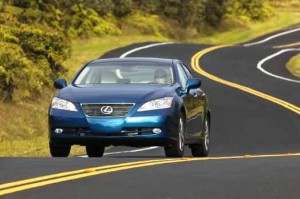
Toyota's product liability and personal injury woes from mats will continue for a long time.
Toyota Motor Corporation has settled a lawsuit with the Saylor and Lastrella families that resulted in four deaths in August of 2009. The accident called attention to floor mat entrapment, a safety issue that eventually led to recalls of millions of Toyota and Lexus products globally.
It also prompted multiple Congressional investigations and a record fine against Toyota imposed by the National Highway Traffic Safety Administration. Hundreds of lawsuits alleging unintended acceleration or floor mat entrapment are now part of a huge class action matter in Southern California. Toyota has moved to dismiss all the claims alleging unintended acceleration, saying no evidence has been presented of an electronic problem. It’s a long-term strategy, which could save it millions upon millions in litigation.
On August 28, 2009, California Highway Patrol Officer Mark Saylor and three members of his family died in a high speed accident on a highway near San Diego, California, while driving a 2009 Lexus ES350 lent to them by a local dealer. Saylor, 45; his wife, Cleofe, 45; and their 13-year-old daughter Mahala died, along with Cleofe Saylor’s brother, Chris Lastrella, 39, when Saylor was unable to stop the sedan.
In a statement released after a Los Angeles Times story on the settlement, Toyota said:
“Through mutual respect and cooperation, Toyota and the Saylor and Lastrella families reached an amicable agreement in mediation that fully resolves these claims without the need for litigation. We felt that was important for Toyota, the dealer and the families.”
As is normal in product liability legislation, the amounts involved are confidential. Toyota did say that the lawsuit fully resolves the families’ product liability claims against the Bob Baker Lexus dealership.
“Toyota is not, however, in a position to address the additional claims the families have against the dealership that are independent of Toyota,” the statement also said, leaving unclear if further litigation between them is possible.
Toyota, which has a history of objecting to LA Times coverage, also said:
“Although we clearly explained in our statement to the Times that the product liability claims against both Toyota and the dealership have been resolved, the Times published a shortened version of that statement to suggest, misleadingly, that the settlement only addressed the claims against Toyota.”
In the Times story the relevant copy read:
“By getting the case off its growing plate of legal woes, Toyota can focus on an aggressive strategy to fend off lawsuits with less dramatic evidence, many of which point to potential electronic problems in vehicles.
“But the settlement has left out co-defendant Bob Baker Lexus, a move by the automaker that could set the stage for a potentially bloody fight with its own dealers over who is to blame for sudden acceleration incidents.
“ ‘Toyota has sought to protect only its own interests. They decided to cut out their own dealer, said Larry Willis, attorney for Bob Baker Lexus, which lent the ill-fated Lexus ES to California Highway Patrol officer Mark Saylor in August 2009,’ ” the Times story said.
Willis alleges that it was an electronic problem that led to the Lexus accident, a troublesome charge for Toyota.
Some of the controversy is positioning for future litigation, while casting doubt on the Time’s accuracy, particularly regarding lawsuits claiming unintended acceleration.
In a letter to the Times last December objecting to its interpretation in this area Toyota said in part:
“We appreciate the LA Times’ acknowledgment that Toyota ‘did the right thing’ in instituting a recall in response to incidents of unwanted acceleration, and in committing to add ‘smart pedal’ software technology as an added fail-safe measure. We also respect the Times’ in-depth reporting of this issue, though we disagree with some of the theories it has embraced.
“The issue of unintended acceleration involving Toyota and Lexus vehicles has been thoroughly and methodically investigated on several occasions over the past few years. These investigations have used a variety of proven and recognized scientific methods. Importantly, none of these studies has ever found that an electronic engine control system malfunction is the cause of unintended acceleration,” Toyota said.
Where this all heads remains to be seen, but it will take years and hundreds of millions of dollars to sort the legal claims. Toyota has not lost a lawsuit alleging unintended acceleration thus far. Keeping it that way is crucial to the outcome of future litigation.
(See also Horror of Saylor Fatal Lexus Accident Reviewed at Opening of Congressional Hearing and Toyota Orders Dealers to Check Floor Mats and Toxic Testimony Toasts Toyota Today – Or Not?)
